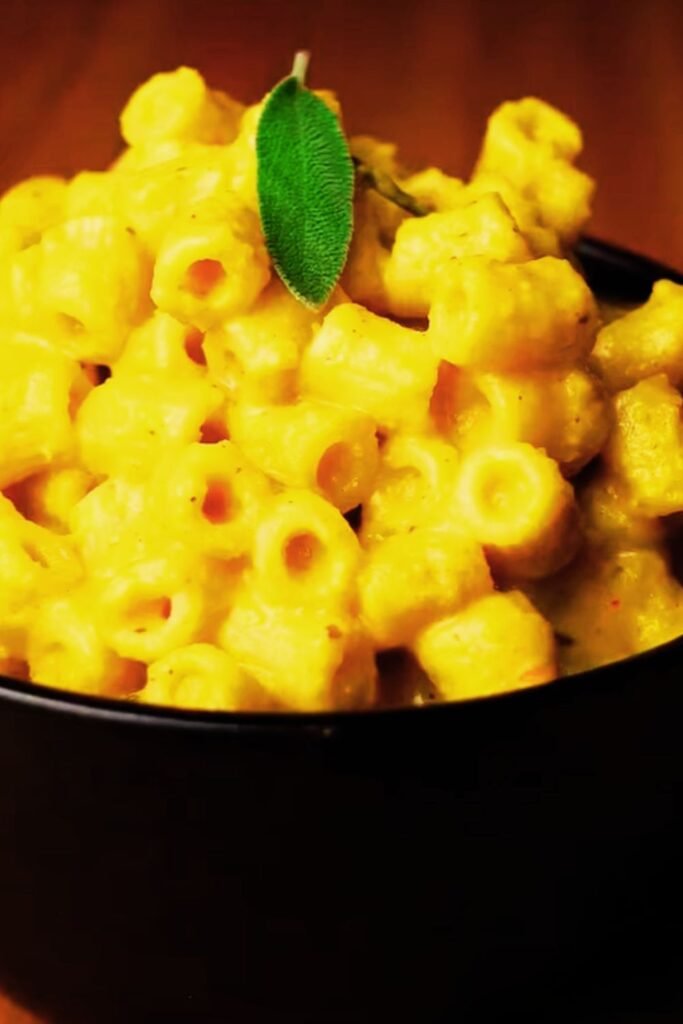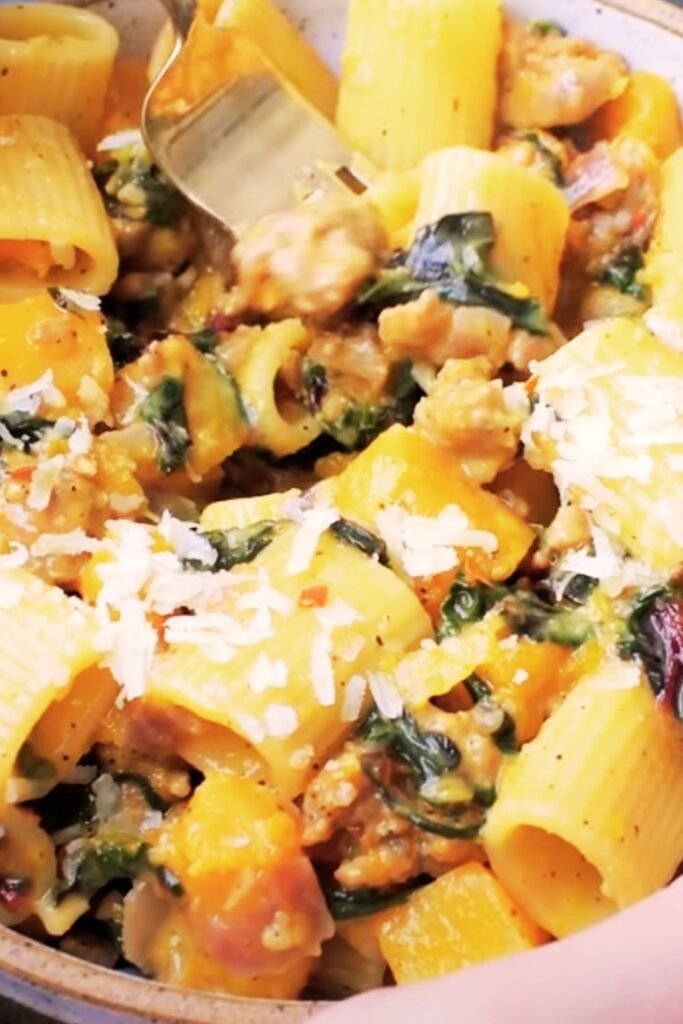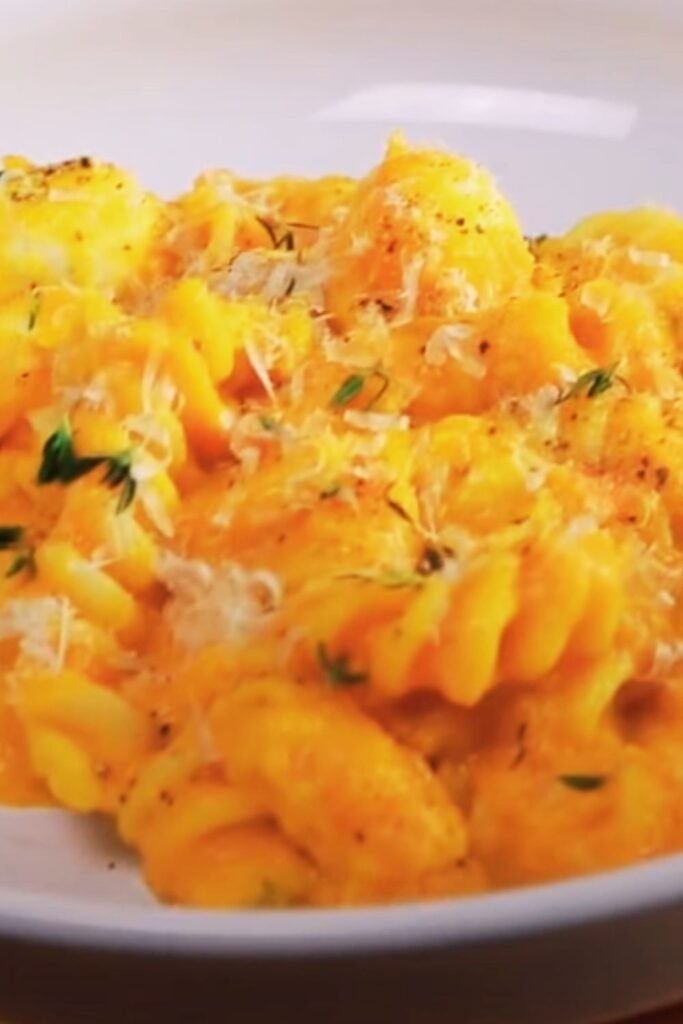There’s something magical about the first crisp evening of fall when I crave comfort food that warms me from the inside out. That’s exactly when I turn to my go-to recipe for creamy butternut squash pasta with sausage – a dish that perfectly captures the essence of autumn in every single bite.
I’ve been perfecting this recipe for years, and it never fails to impress both my family and dinner guests. The silky butternut squash creates a naturally sweet and creamy base, while Italian sausage adds that savory depth that makes this dish absolutely irresistible. What I love most about this recipe is how it transforms simple, seasonal ingredients into something that feels restaurant-quality, yet remains completely achievable in my home kitchen.
The beauty of butternut squash lies in its versatility and nutritional value. When roasted properly, it develops a caramelized sweetness that pairs beautifully with herbs like sage and thyme. Combined with quality Italian sausage and al dente pasta, this dish becomes a celebration of fall flavors that satisfies both the soul and the appetite.
Understanding Key Ingredients
Butternut Squash : A winter squash variety with orange flesh, naturally sweet flavor, and creamy texture when cooked. Rich in vitamins A and C, fiber, and potassium. Peak season runs from October through February.
Italian Sausage : Seasoned ground pork typically flavored with fennel, garlic, and various spices. Available in sweet (mild) or hot (spicy) varieties. Choose casings that can be easily removed for crumbling.
Heavy Cream : Dairy product with 35-40% fat content that creates rich, velvety sauces without curdling when heated. Essential for achieving the signature creamy texture.
Fresh Sage : Aromatic herb with earthy, slightly peppery flavor that complements butternut squash exceptionally well. Use sparingly as its flavor can be overpowering.
Parmigiano-Reggiano : Aged Italian hard cheese with complex, nutty flavor. Freshly grated provides better melting properties and flavor than pre-shredded varieties.

Nutritional Benefits and Seasonal Advantages
This pasta dish offers remarkable nutritional benefits that make it both delicious and wholesome. Butternut squash provides an excellent source of beta-carotene, which converts to vitamin A in our bodies, supporting eye health and immune function. I particularly appreciate how this vegetable adds natural sweetness without requiring added sugars, making the dish satisfying for both adults and children.
The Italian sausage contributes high-quality protein essential for muscle maintenance and satiety. When I choose lean sausage varieties, I can enjoy the rich flavors while maintaining a more balanced nutritional profile. The combination of protein from sausage and complex carbohydrates from pasta creates a well-rounded meal that provides sustained energy.
From a seasonal perspective, this recipe celebrates fall’s abundance perfectly. Butternut squash reaches peak quality during autumn months, offering the best flavor and texture for cooking. I’ve found that using seasonal produce not only tastes better but also tends to be more affordable and environmentally sustainable.
Essential Equipment and Preparation
Before diving into cooking, I always ensure my kitchen setup supports success. The right equipment makes this recipe significantly easier and more enjoyable to prepare.
Essential Equipment:
- Large roasting pan or baking sheet
- Sharp chef’s knife for squash preparation
- Large skillet or sauté pan
- Large pot for pasta cooking
- Immersion blender or regular blender
- Fine-mesh strainer
- Wooden spoon for stirring
- Microplane grater for cheese
Preparation Timeline:
- Squash roasting: 25-30 minutes
- Sausage cooking: 8-10 minutes
- Pasta cooking: 8-12 minutes (depending on type)
- Sauce assembly: 5-7 minutes
- Total active cooking time: 45-50 minutes
I recommend starting with squash preparation since roasting takes the longest time. While the squash roasts, I can prepare other ingredients and get everything ready for quick assembly once the pasta begins cooking.

Step-by-Step Recipe Instructions
Preparing the Butternut Squash
I begin by preheating my oven to 425°F (220°C). This high temperature ensures proper caramelization of the squash edges while maintaining creamy centers.
For a medium-sized butternut squash (approximately 2-3 pounds), I use this preparation method:
- Cut the squash in half lengthwise using a sharp chef’s knife
- Scoop out seeds and stringy pulp with a large spoon
- Score the flesh in a crosshatch pattern, about 1-inch deep
- Brush cut surfaces with olive oil and season with salt and pepper
- Place cut-side down on a lined baking sheet
- Roast for 25-30 minutes until fork-tender
The crosshatch scoring technique I use allows for even cooking and easier removal of flesh once roasted. When properly cooked, the flesh should yield easily to gentle pressure and have golden-brown caramelized edges.
Cooking the Sausage
While the squash roasts, I prepare the sausage component. I prefer using sweet Italian sausage, but hot varieties work beautifully for those who enjoy spicier dishes.
- Remove sausage from casings and break into bite-sized pieces
- Heat a large skillet over medium-high heat
- Add sausage pieces without oil (they release their own fat)
- Cook for 8-10 minutes, stirring occasionally
- Ensure internal temperature reaches 165°F (74°C)
- Remove sausage with a slotted spoon, leaving rendered fat in pan
I save approximately 2 tablespoons of the rendered sausage fat in the pan for building the sauce base. This fat carries incredible flavor that enhances the overall dish complexity.
Creating the Butternut Squash Sauce
Once the roasted squash cools slightly, I scoop out the flesh and begin creating the creamy sauce base.
- Transfer roasted squash flesh to a blender or use an immersion blender
- Add 1 cup of heavy cream gradually while blending
- Season with salt, white pepper, and a pinch of nutmeg
- Blend until completely smooth and creamy
- Strain through fine-mesh strainer if desired for ultra-smooth texture
The sauce should have a velvety consistency similar to Alfredo sauce. If it seems too thick, I add pasta cooking water later to achieve the perfect coating consistency.
Pasta Selection and Cooking
Choosing the right pasta shape significantly impacts the final dish success. I prefer pasta shapes that hold sauce well and complement the creamy texture.
Best Pasta Choices:
- Penne: Tube shape holds sauce inside
- Rigatoni: Large tubes with ridges for sauce adhesion
- Fusilli: Spirals grab and hold creamy sauce
- Cavatappi: Corkscrew shape with excellent sauce retention
- Orecchiette: Cup shape perfect for chunky sauces
I cook pasta in heavily salted water (it should taste like seawater) until one minute short of package directions. This ensures the pasta finishes cooking in the sauce, absorbing flavors while maintaining perfect al dente texture.

Assembly and Final Seasoning
The final assembly requires timing and attention to create the perfect creamy consistency without breaking the sauce.
- Return sausage to the skillet with rendered fat
- Add butternut squash sauce and heat gently over medium-low heat
- Toss in cooked pasta with 1/2 cup pasta cooking water
- Add fresh sage leaves (about 8-10 leaves, torn)
- Remove from heat and stir in freshly grated Parmigiano-Reggiano
- Adjust consistency with additional pasta water if needed
The key to success lies in gentle heat during final assembly. High temperatures can cause the cream to separate or the cheese to become grainy. I always taste and adjust seasoning at this stage, often adding a squeeze of fresh lemon juice to brighten the rich flavors.
Nutritional Information and Serving Details
| Nutrient | Per Serving (1/6 of recipe) | Daily Value % |
|---|---|---|
| Calories | 485 | 24% |
| Protein | 18g | 36% |
| Carbohydrates | 52g | 17% |
| Dietary Fiber | 4g | 16% |
| Total Fat | 23g | 35% |
| Saturated Fat | 12g | 60% |
| Cholesterol | 65mg | 22% |
| Sodium | 780mg | 32% |
| Vitamin A | 184% DV | 184% |
| Vitamin C | 35% DV | 35% |
| Calcium | 285mg | 28% |
| Iron | 2.1mg | 12% |
Ingredient Variations and Substitutions
Over the years, I’ve experimented with numerous variations that accommodate different dietary needs and preferences while maintaining the dish’s essential character.
Protein Alternatives
Turkey Sausage: Reduces fat content by approximately 30% while maintaining similar flavor profiles. I recommend choosing varieties with fennel seasoning for authentic Italian taste.
Chicken Sausage: Lighter option that works particularly well with herb-seasoned varieties. Cooking time remains similar to pork sausage.
Vegetarian Options: Crumbled firm tofu seasoned with fennel, garlic, and red pepper flakes creates a plant-based alternative. I also enjoy using roasted mushrooms for umami depth.
Dairy Modifications
Half-and-Half: Can replace heavy cream for lighter version, though sauce won’t be as rich. Add 1 tablespoon of flour to prevent separation.
Coconut Cream: Excellent dairy-free alternative that complements butternut squash sweetness. Use full-fat canned coconut cream for best results.
Greek Yogurt: Stir in at the end off heat to prevent curdling. Provides tangy contrast to sweet squash while adding protein.
Seasonal Vegetable Additions
I often incorporate additional seasonal vegetables to increase nutritional value and visual appeal:
- Brussels Sprouts: Halved and roasted alongside squash
- Baby Spinach: Wilted into the final dish for added iron and color
- Caramelized Onions: Sweet complement to butternut squash
- Roasted Red Peppers: Adds smoky sweetness and vibrant color
Storage and Meal Prep Strategies
This recipe works wonderfully for meal preparation and planned leftovers. I’ve developed several strategies for maintaining quality when preparing ahead or storing leftovers.
Make-Ahead Components
Roasted Squash: Can be prepared up to 3 days in advance. Store covered in refrigerator and bring to room temperature before using.
Sausage: Cook completely and refrigerate for up to 4 days. Reheat gently before adding to sauce.
Butternut Squash Sauce: Prepare sauce base without cream and freeze for up to 3 months. Add cream when reheating.
Storage Guidelines
| Storage Method | Duration | Quality Notes |
|---|---|---|
| Refrigerator | 3-4 days | Sauce may thicken; add pasta water when reheating |
| Freezer (sauce only) | 3 months | Freeze without cream; add when reheating |
| Freezer (complete dish) | 1 month | Texture changes slightly; best for sauce preparation |
Reheating Instructions
I’ve found the best reheating method involves gentle stovetop warming with additional liquid to restore creamy consistency.
- Place leftovers in large skillet over medium-low heat
- Add 2-3 tablespoons of chicken broth or pasta water
- Stir gently until heated through (about 5-7 minutes)
- Add fresh herbs and cheese just before serving
Serving Suggestions and Pairings
This rich, creamy pasta benefits from accompaniments that provide textural contrast and fresh flavors to balance the richness.
Bread Options
- Crusty Italian bread for sauce sopping
- Garlic bread made with fresh herbs
- Focaccia with rosemary and sea salt
- Warm dinner rolls with herb butter
Salad Pairings
- Arugula salad with lemon vinaigrette cuts through richness
- Mixed greens with dried cranberries and walnuts
- Caesar salad provides complementary creamy textures
- Simple spinach salad with balsamic dressing
Vegetable Sides
- Roasted Brussels sprouts with pancetta
- Sautéed green beans with almonds
- Roasted carrots with fresh thyme
- Steamed broccoli with lemon zest
Troubleshooting Common Issues
Through years of making this recipe, I’ve encountered and solved various common problems that can arise during preparation.
Sauce Separation
Problem: Cream sauce appears curdled or broken Solution: Remove from heat immediately and whisk in cold cream gradually. Prevention involves using medium-low heat and avoiding boiling.
Overly Thick Sauce
Problem: Sauce becomes too thick to coat pasta properly Solution: Gradually add warm pasta cooking water until desired consistency is achieved. The starch in pasta water helps maintain smoothness.
Bland Flavor
Problem: Dish lacks depth and complexity Solution: Ensure adequate seasoning at each stage. Add more salt, fresh herbs, or a splash of white wine to brighten flavors.
Pasta Overcooking
Problem: Pasta becomes mushy during final assembly Solution: Cook pasta 1-2 minutes less than package directions, allowing it to finish cooking in the sauce.
Seasonal Menu Planning
I love incorporating this dish into broader seasonal menu planning, creating cohesive fall dining experiences that celebrate autumn’s abundance.
Thanksgiving Preparation
This pasta works beautifully as a starter course for Thanksgiving dinner, preparing guests’ palates for the feast ahead. The butternut squash theme connects naturally with traditional autumn flavors while offering something unexpected.
Casual Fall Entertaining
For informal dinner parties, I often prepare this dish alongside seasonal salads and rustic bread. The combination creates a restaurant-quality experience that feels approachable and warm.
Weeknight Family Dinners
The recipe scales beautifully for family meals, and I’ve found that children particularly enjoy the naturally sweet butternut squash sauce. It’s become a regular rotation dinner that pleases everyone.
Questions and Answers
Q: Can I use frozen butternut squash instead of fresh? I’ve experimented with frozen butternut squash, and while it can work in a pinch, I definitely prefer fresh for this recipe. Fresh squash develops better caramelized flavors when roasted, and the texture is more consistent. If you must use frozen, thaw it completely and pat dry before roasting to remove excess moisture.
Q: What’s the best way to cut butternut squash safely? Cutting butternut squash can be intimidating, but I’ve developed a safe technique. First, I microwave the whole squash for 2-3 minutes to soften slightly. Then I cut off both ends, peel with a sharp vegetable peeler, cut in half lengthwise, and scoop out seeds. A sharp knife is essential for safety.
Q: Can this recipe be made dairy-free? Absolutely! I’ve successfully made dairy-free versions using full-fat coconut cream instead of heavy cream and nutritional yeast instead of Parmesan cheese. The flavor profile changes slightly, becoming more tropical, but it’s still delicious. Cashew cream also works beautifully as a substitute.
Q: How do I prevent the sauce from becoming grainy? Grainy sauce usually results from overheating or adding cheese while the sauce is too hot. I always remove the pan from heat before stirring in the Parmesan, and I use freshly grated cheese rather than pre-shredded, which contains anti-caking agents that can affect texture.
Q: Can I make this recipe spicier? Definitely! I often add red pepper flakes with the sausage or use hot Italian sausage instead of sweet. You can also incorporate a diced jalapeño when cooking the aromatics or finish with a drizzle of chili oil for extra heat.
Q: What pasta water consistency should I aim for? The pasta water should be starchy and cloudy, almost like thin milk. This happens naturally when cooking pasta in well-salted water. I always reserve at least one cup because it’s much easier to thin a sauce than to thicken it once you’ve added too much liquid.
Q: How can I make this recipe lighter without losing flavor? I’ve lightened this recipe successfully by using half-and-half instead of heavy cream, incorporating more vegetables like spinach or zucchini, and using turkey sausage instead of pork. You can also serve smaller portions alongside a large salad to create a more balanced meal.
Q: Can I prepare components of this dish in advance? Yes, this recipe is quite meal-prep friendly! I often roast the butternut squash a day ahead and store it in the refrigerator. The sausage can also be cooked in advance. However, I recommend preparing the final sauce and combining with pasta just before serving for the best texture and flavor.
This creamy butternut squash pasta with sausage has become one of my most requested recipes, and I hope it brings the same warmth and satisfaction to your fall dinners as it does to mine. The combination of seasonal ingredients, rich flavors, and comforting textures makes it perfect for everything from weeknight family meals to special occasion entertaining.